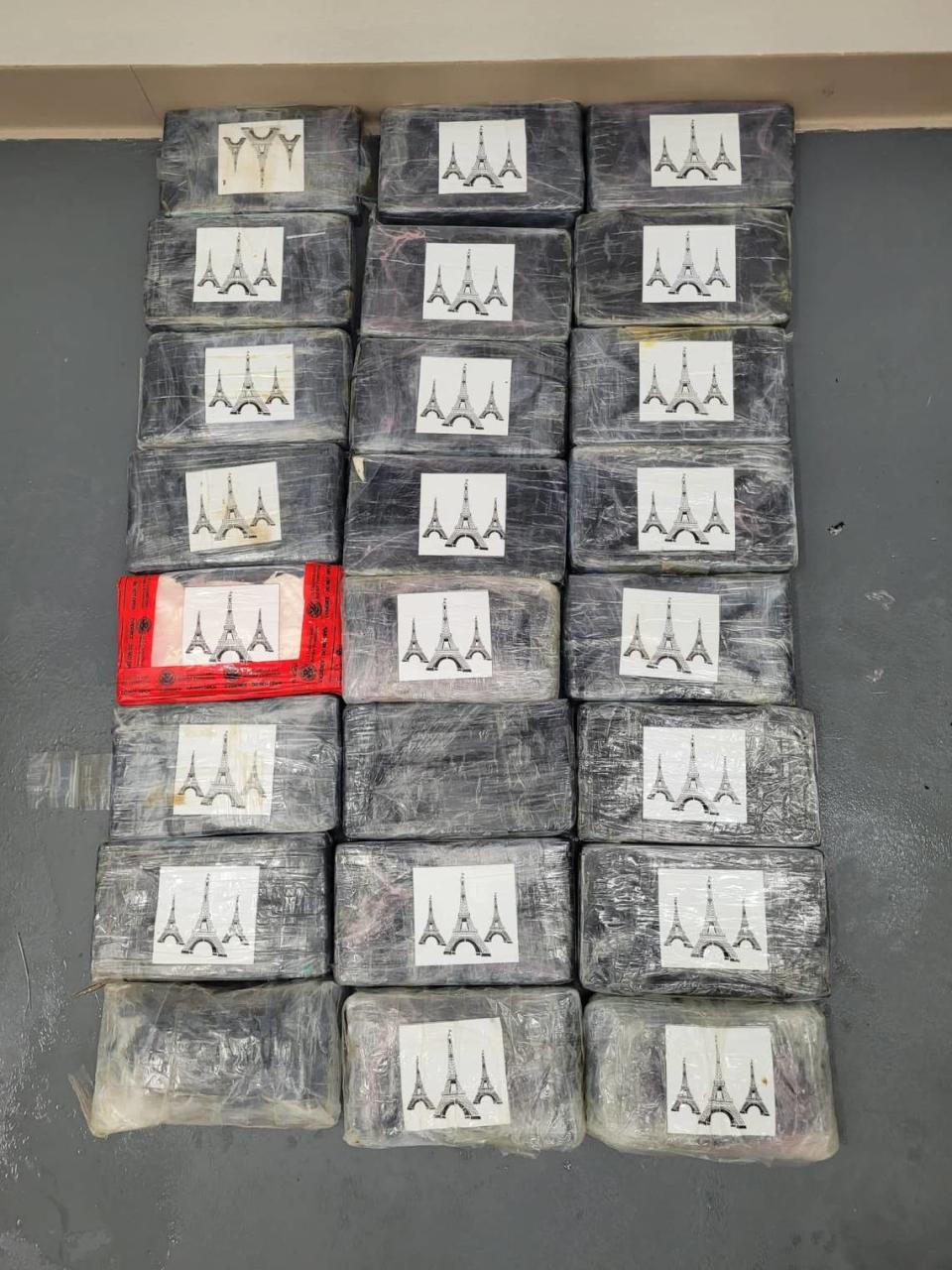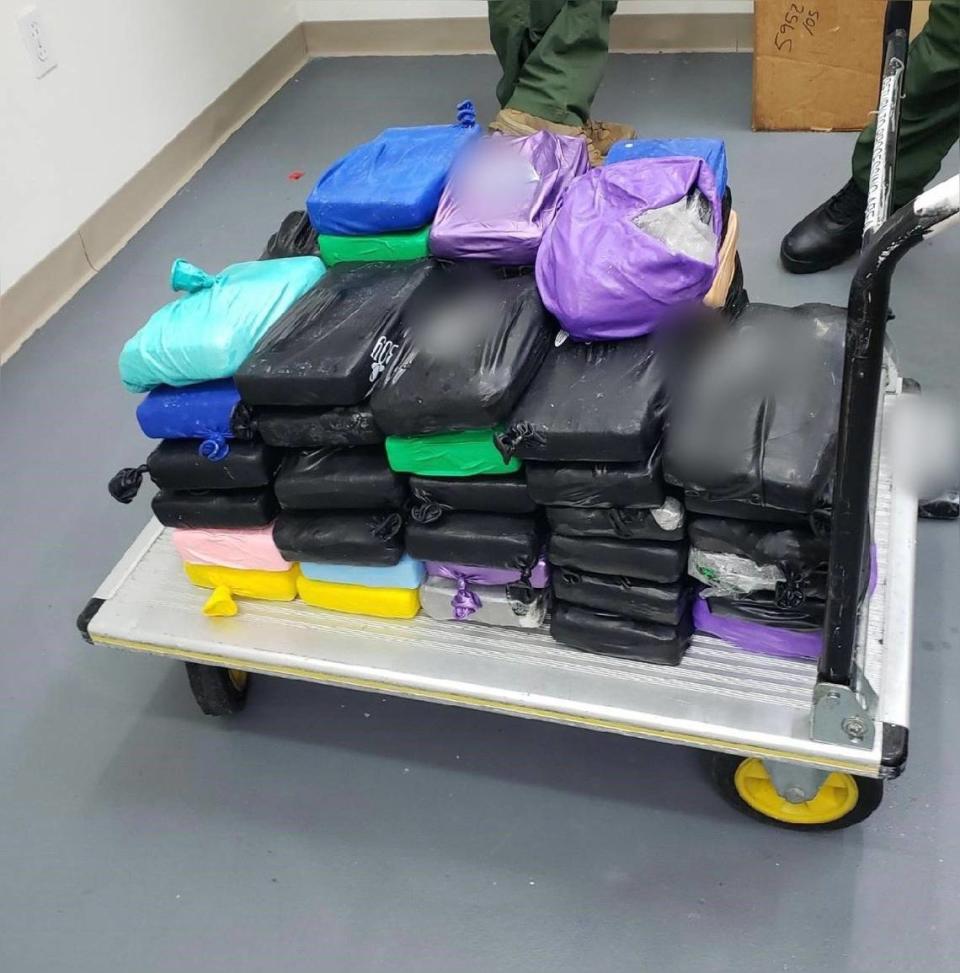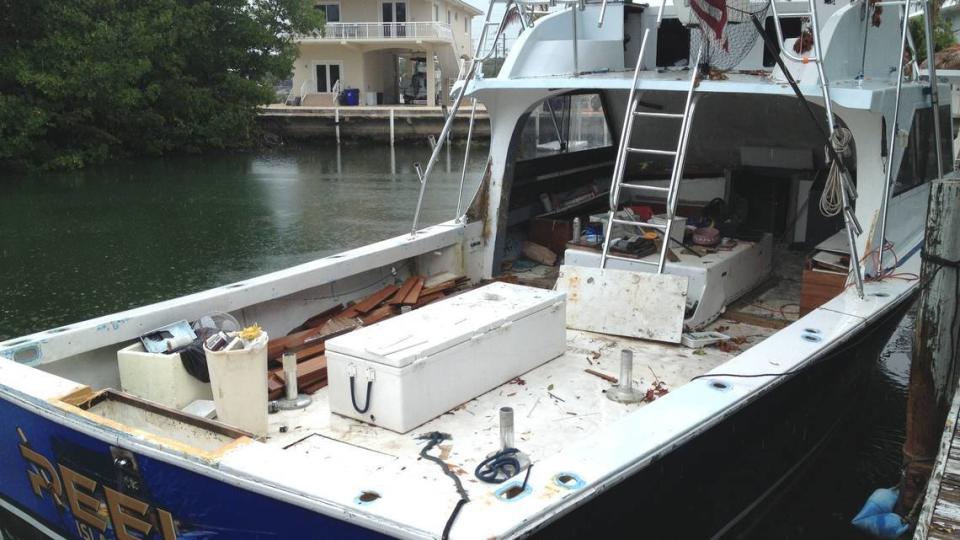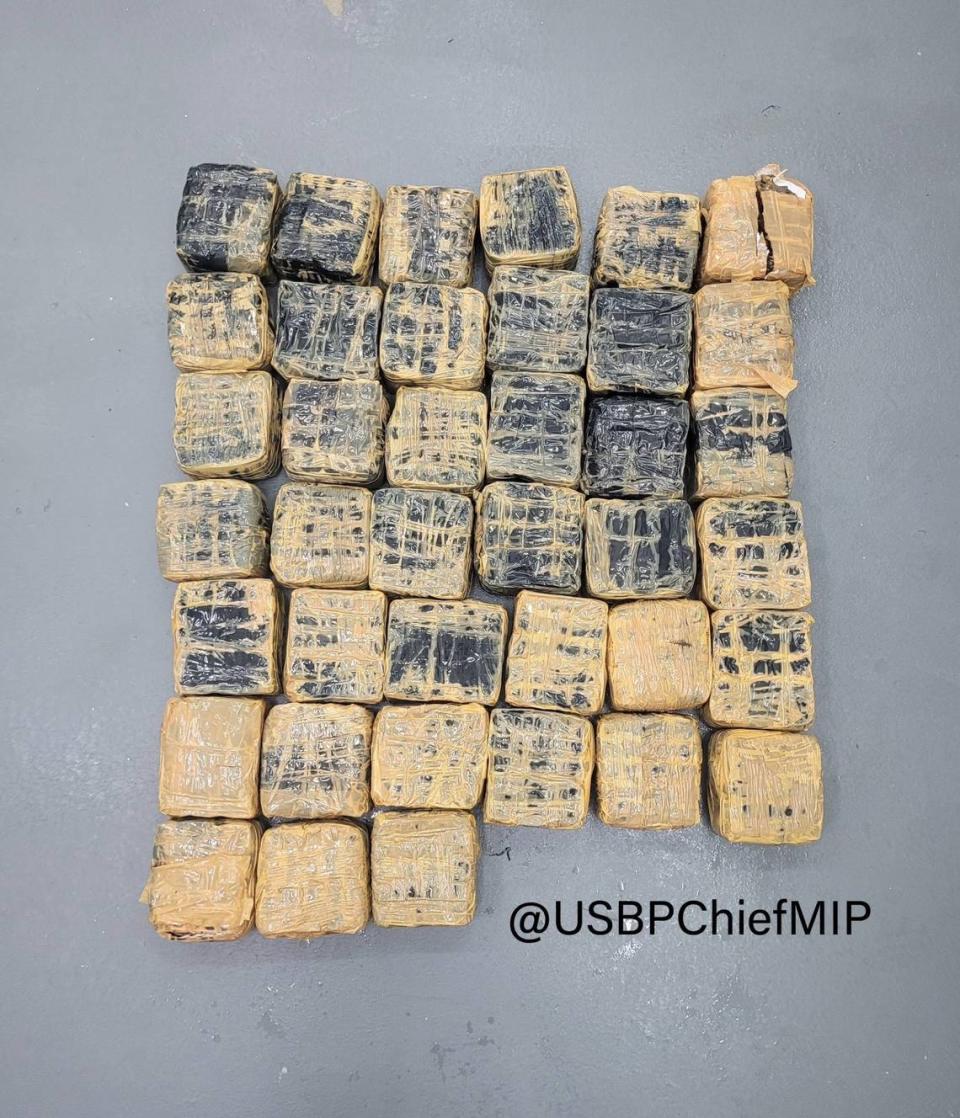What’s behind the drugs found floating off the Florida Keys? It can come down to 1 thing
“They move it through Miami, sell it in L.A.,” Glenn Frey sings in his ‘80s classic “Smuggler’s Blues,” a lyrical tale about the dangerous underworld of the cocaine trade. “They say they’re gonna stop it, but it doesn’t go away.”
In the nearly 40 years since the song came out, it hasn’t.
On the hit ‘80s TV show, “Miami Vice, “ Sonny Crockett and Ricardo Tubbs called cocaine “Bolivian marching powder.” And, on the show, as in real life, before it got to Miami, the drugs went through the Florida Keys.
And they still do.
“The importation of drugs into South Florida has never ceased,” Monroe County Sheriff Rick Ramsay said this month.
Over the summer and early fall, boaters off the Keys, in separate instances, have found several large loads of cocaine, hashish and marijuana floating in the waters surrounding the island chain.
Where there’s demand, there’s supply.
And people are finding more of that supply in South Florida waters in recent months.

Over the summer, Tampa Mayor Jane Castor, a former police officer, came across 70 pounds of cocaine floating in the ocean while on a fishing trip to the Keys with her family.
“My younger brother saw some debris in the water, and so we went over there because, quite often, if you fish, the smaller fish will go under any kind of shade they can get. That attracts the larger fish, like triple tail,” Castor said at the time. “We thought it was shade as opposed to something shady. But, you know, the closer we got and once I saw the rip in it and see the tightly wrapped packages, I was like definitely that’s a bale of cocaine.”
The U.S. Border Patrol, which takes possession of seized drug shipments, estimated that the total street value of the load was $1.1 million.
That was the fifth large load of illegal drugs found by boaters off the Keys in July, according to local and federal authorities. Several more were found in August and September.
Federal officials didn’t respond when asked if the government keeps track of drugs found at sea or washed up on land or compares finds year over year.
So what’s behind the recent trend? Is it even a trend? Or have smugglers always been losing loads as they pass by the Keys, and they float off and sink without people noticing?
Eric Weindorf, special agent in charge for the Miami area of the U.S. Department of Homeland Security Investigations, said the drug shipments began showing up in the ocean off the Keys more frequently when the island chain became the epicenter of a surge in maritime migration from Cuba and Haiti at the end of 2022 and beginning of 2023.
He thinks the two issues are related.
“We do have intelligence and we do have investigations that indicate some of these same individuals that are involved in smuggling migrants are also engaged in smuggling narcotics,” Weindorf said.
Weindorf said the drugs end up in the water because smugglers dump them over the side of their boats as they see Coast Guard or Customs and Border Protection Air and Marine Patrol crews approaching.
“It’s a lot easier to do that with bales of cocaine than migrants,” he said.
Ramsay, the Florida Keys sheriff, however, has a different perspective, noting the frequency of drug wash-ups and loads found at sea ramped up this summer — at the same time migrant landings in the Keys dwindled to a fraction of what they were over the winter.
“I don’t see any correlation between the two,” he said. “People are either drug smugglers or they are alien smugglers. The two combined are so rare.”
Ramsay sees maritime drug smuggling off the Keys as a chronic problem. It becomes noticeable or stays under the radar depending on the tactics smugglers use.
In the ‘80s, speed boats, or “go-fasts,” were the vessels of choice because they could outrun anything on the water the Coast Guard, Customs or local law enforcement had in their fleets. But times have changed.
Changing tactics for drug smuggling
Law enforcement now have boats that can go just as fast as the fastest private vessels. With surveillance planes, drones and helicopters, if a suspected smuggling boat is spotted at sea, there’s a good chance it won’t get away.
“If I were them, I’d want something that doesn’t stand out. A trawler, something doing 8 knots,” Ramsay said. “They change their tactics. Tactics change. You have to adapt your tactics. They learn from us.”
The last large dope smuggling bust in the Keys was in June when Border Patrol agents stopped a sailboat in the Middle Keys city of Marathon because it failed to check in with Customs after a voyage from Mexico. Agents noticed a large aluminum water tank in the bulkhead of the vessel that looked new.
Inside they found 167 pounds of cocaine. Ramsay said a sheriff’s office drug-sniffing dog alerted agents to the contraband before they opened the tank.

“The government doesn’t want to take a chance of cutting a boat apart and getting sued. But, what was that? A piece of ... junk sailboat from a foreign country. If our dog didn’t hit, they wouldn’t have cut it,” Ramsay said.
A Lithuanian man, Matas Vezauskas, 32, was the only person on the boat and remains in Monroe County jail on a $2.5 million bond.
DEA combat
The Drug Enforcement Administration, one of several federal agencies trying to stop narcotics smuggling, says it’s also contending with traffickers’ ever-changing tactics.
Deanne L. Reuter, DEA Miami Field Division special agent in charge, said the agency is discovering new routes, while also learning that what was old is often suddenly new again.
““Drug trafficking organizations are constantly evolving their transportation and smuggling methods, as well as continuing to utilize their old routes, to smuggle illegal narcotics into the United States,” Reuter told the Miami Herald in an email. “In order to be successful, the DEA Miami Field Division and our law enforcement partners are constantly adapting to these changes.”
When floating bricks of weed or coke hit the headlines, people often speak nostalgically, and with a tinge of humor. Those were the days, decades ago, when fishermen found “square groupers” — large bales of marijuana — at sea. But the circumstances can be deadly as well.
So far, federal law enforcement says they are relieved not to be seeing much fentanyl coming in through the maritime border into Florida, which is more of an immediate concern than marijuana and hashish.
According to the DEA, out of the more than 110,000 people in the United States who died of drug overdoses in 2022, 70% involved synthetic opioids like fentanyl.
“We’ve been pretty lucky when it comes to fentanyl, compared with other areas,” said a federal agent who asked not to be named. “But we are seeing an increase in the Southeast region. It’s concerning to us.”
A drug discovery leads to murder
Loads of drugs mean lots of money. Lost shipments mean smugglers and dealers are often out millions of dollars. Most people who find drugs washed up or at sea report them to the police. But others with the know-how can capitalize on found treasure.
That’s what happened eight years ago — and the discovery ended up at the root of a well-known murder case in the Florida Keys.
In the summer of 2015, police say Islamorada charter fishing mate Jeremy Macauley found multiple kilos of cocaine offshore while working on his boss’ boat, the Sea Horse, out of Whale Harbor Marina.

According to police, the coke was brought to shore, broken up, and Macauley, with the help of friends, sold it off locally.
Things turned deadly after one of those friends, Carlos Ortiz, began demanding more money from Macauley. If he didn’t cough it up, Ortiz told Macauley in a series of extortion texts, he’d tell the cops everything.
On Oct. 15, 2015, someone went to the Tavernier house where Ortiz, 30, lived with his girlfriend, Tara Rosado, 26, and shot them dead while Rosado’s three young children were in the home. Police and prosecutors said the gunman was Macauley.

He was convicted on two counts of first-degree murder in 2017, but an appellate court reversed the conviction in 2020 over jail-house witness testimony that wasn’t allowed to be heard during the original trial. The judges ordered a new trial, which is pending. Macauley, who maintains his innocence, remains in county jail.
‘It’s so lucrative’
The U.S. Coast Guard is on the front lines in combating smuggling drugs, which mostly originate in South America. Cutters are regularly assigned to the eastern Pacific Ocean to try to intercept loads as they move offshore.
Regarding the recent loads found off and on shore of the Keys, spokesman Petty Officer Santiago Gomez said the service “is highly invested in finding the reason behind these sightings of narcotics found in the Florida Keys. We are currently working with our partner agencies to stop more of these shipments from coming into the U.S., and to better understand these seemingly random floating bales observed offshore.”
When people find drugs at sea or on land and report them, local police call the U.S. Border Patrol to take custody of the contraband, said Adam Hoffner, division chief for U.S. Customs and Border Protection’s Miami operations.
“In most of the wash-up cases, these drugs are transferred to a regional CBP vault, where they are processed for destruction,” Hoffner said. “In some cases, the narcotics may be held for evidence.”

Stopping the flow of illegal drugs into the United States is a multi-billion dollar effort undertaken daily by federal, state and local law enforcement. But as the prophetic song says, “it doesn’t go away.”
Cops say that despite their efforts, smuggling stems from consumer demand — and there’s just too much money to be made for smugglers to give up.
“We’ve always seen drugs coming in floating. We are seeing a high number,” Ramsay, the Keys sheriff, said. “But, again, where there’s a demand, a need, there’s always going to be a supply. It’s so lucrative, we shouldn’t be surprised.”

